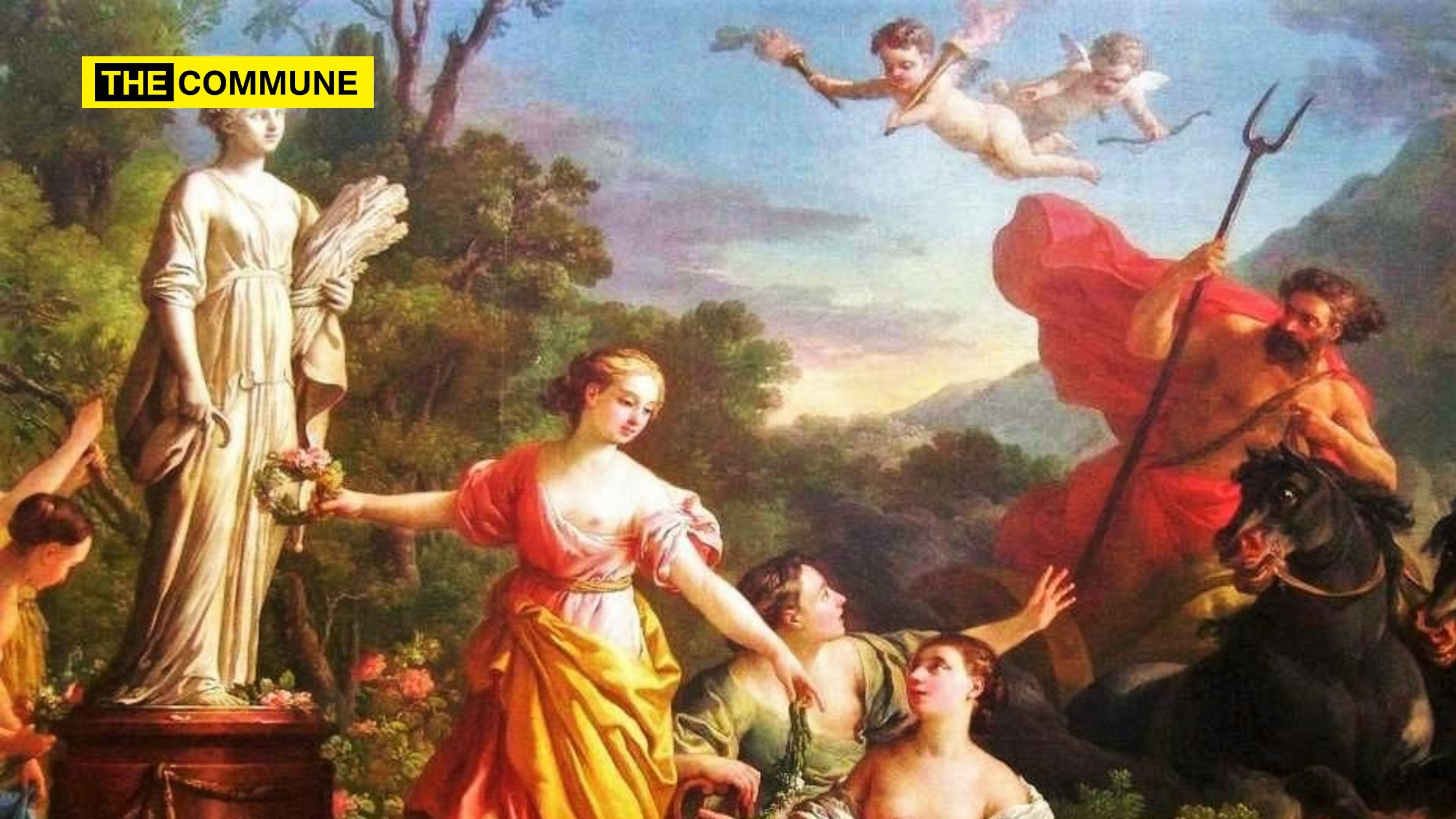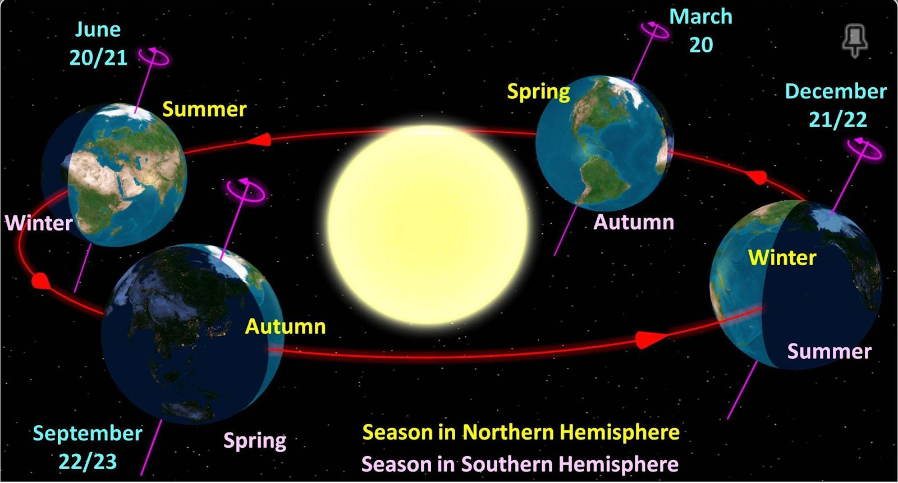
As with any other “International Day”, women’s day has its origin in history, particularly Greco-Roman that got transmogrified into Catholicism as we know it today.
Transmogrification refers to the act or process of being transformed into a different form. In theology, this refers to the process when one religious cult, co-opts, or modifies an existing festival or ritual and makes it their own. We will see below how Catholicism was good at this.
Before going into history we have to be familiar with 2 terms – Equinox and Solstice. Equinox refers to the time of the year when the day and night are of mostly equal length, occurring in March and September. Solstice refers to the days with the longest and shortest sunlight times respectively, occurring in June and December. Please note that these reverse in the Southern Hemisphere, however as all documented civilizations developed in the Northern Hemisphere, we will stick with the Northern perspectives.
These days signify change in seasons and are hence called as:
- March Equinox – Vernal Equinox
- June Solstice – Summer Solstice
- September Equinox – Autumnal Equinox
- December Solstice – Winter Solstice

Now, the Vernal Equinox is also called the Spring Equinox as it signifies the end of Winter and the start of spring in the Northern Hemisphere particularly above the tropic of Cancer. As a result, a lot of bronze age civilizations developed holidays or feasts to celebrate this day as the day to welcome spring. The arrival of spring is a very well documented celebration in Mesopotamia, Egypt and in Chinese civilizations, apart from our own. The festival is a celebration of the sacred feminine.
Having understood the Vernal Equinox, we have to get inside the Greco-Roman Pantheon of Gods. The Greek Goddess of harvest and agriculture was Demeter, and her daughter through Zeus was Persephone, the Greek Goddess of spring and vegetation. The myth is that she was kidnapped by her uncle Hades and taken to the underworld, her uncle raped and forcefully married her. As she stayed in the underworld for a long time, she also became the Goddess of the underworld.
After some time, she was rescued by Demeter with the help of Zeus. Her homecoming coincided with the Vernal Equinox and was celebrated as the day of Persephone’s uniting with her mother Demeter. This day or feast signified the arrival of spring.
Now in the middle republican era, Rome conquered Greece. Interestingly, in the Roman pantheon, Liber Pater (free father) was the God of male fertility and freedom and his female counterpart was Libera. Around the 200s BCE, during the conquest of Greece by Romans, Persephone and her mother Demeter were part of the Eleusinian Mysteries based out of ancient Elefsina, the most recent version of the ancient Greek religion. The initiation ceremonies into this mystery cult are well documented at this time.
During this time, as Rome co-opted Greek culture, Persephone was transmogrified into the Latinised Proserpina. This happened around 205 BCE. These divine alliances were formed as the Romans wanted to defeat Carthage in the Second Punic War. Proserpina was now the new Libera, or the Goddess of fertility, freedom, spring, vegetation and underworld. The Spring Equinox by this time was a feast in honour of the new Goddess Proserpina in the Greco-Roman world. As you may know, the Roman calendar was filled with Holidays and feasts in honour of their ever expanding Pantheon of Gods and Goddesses.
This feast continued for over 500 years or till the 4th century CE. Please note that by this time, there was no New Testament and followers of Jesus or Cristianos were mostly outlawed. It was around 305 CE that Constantine mooted the idea of the new religion, Catholicism. Now, as Catholicism as a religion was being invented, the existing Roman feasts and holidays had to be Catholicised for being considered Abrahamic enough. It was because, unlike most ancient religions and civilizations from the Americas to Asia, where the earth, the nature, the planets, the Sun were considered living Gods, Abrahamics or the previous Old Testament considered them to be created for the use of man.
Hence, as a part of this exercise, the feast of Proserpina, was transmogrified into the day of annunciation, the day when Gabriel the Angel announced to Maria that she was the chosen one to carry the seed of God. Now another interesting part that most of us miss is the fact that the virgin birth concept is not original to Catholicism. It has existed in many Mediterranean cultures including the ancient Egyptians. In fact, no festivals, or myths or legends are original to Catholicism, which is another story for another time.
Thus was born the day of annunciation or the Lady’s day. In Spanish, this is called the Fiesta de la Anunciación and in Latin is called annuntiatio.
In modern days, with the rise in Feminist movements, 8th March is accepted as Women’s day which is the most recent transmogrification of the Annunciation day which itself was taken from the Greco-Roman feast of Proserpina. The original feast was a celebration of the sacred feminine who was an equal to her male counterparts in western world. However, her downfall began with the advent of Abrahamic religion, the sacred feminine lost her role in Western and Middle Eastern societies.
So, there is the story of women’s day that is purely derived from Catholicism, the invented religion of the Romans of late antiquity, though she never is considered an equal to man. Thus in conclusion, we may safely say that we the Sanatanis are the only living children of ancient civilizations that accords equal if not a pedestal above for the sacred Feminine, the Shakthi, the seed bearer of all life on earth, and beyond. Our Holi festival is a direct witness to this. Instead of blindly copying what the west tells us, be proud of our own culture and heritage while we celebrate Women’s day and pay respects to Her, just like our ancients taught us to do so.
Click here to subscribe to The Commune on Telegram and get the best stories of the day delivered to you personally.




